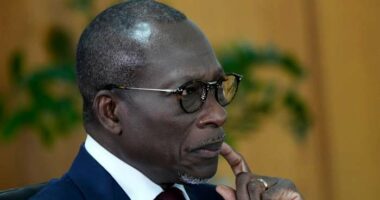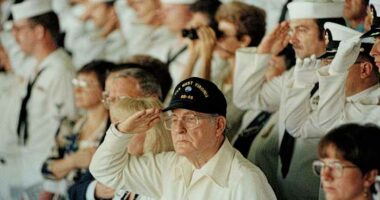Share this @internewscast.com
JOHNSON CITY, Tenn. — East Tennessee State University (ETSU) proudly introduced five new bronze sculptures on Saturday, commemorating the historic integration of the university by five African American students in the 1950s.
The creation of this monument follows the unfortunate damage to the Borchuck Plaza Memorial Fountain caused by a severe Arctic blast. The sculptures pay tribute to ETSU’s pioneering African American students: Eugene Caruthers, Elizabeth Watkins Crawford, Clarence McKinney, George L. Nichols, and Mary Luellen Owens Wagner.

Austen Brantley, a talented artist hailing from Detroit, Michigan, was chosen from a competitive pool of finalists to bring this significant project to life.
Expressing his gratitude, Brantley remarked on the honor of being selected to craft a piece that encapsulates a vital chapter in the university’s past.
“To me, it’s about legacy,” Brantley explained. “It’s crucial to create things that extend beyond personal significance, impacting the entire community.”
The artist shared that the sculptures took approximately seven months to complete. He described the process as a rewarding journey, particularly the opportunity to connect with the individuals whose stories are now immortalized in his work, aptly titled ‘The Path.’
“It was amazing because usually I’m sculpting people that have passed on, but to be able to see them in a person is a beautiful gift, because usually people don’t get to see themselves honored,” Brantley said. “I feel like that’s a very amazing responsibility that they gave me and I’m very honored to have met them and to shake their hand.”
News Channel 11 spoke with George Nichols, one of the faces behind the monument. He said it is “odd but means everything” to see himself featured in the sculptures.
“It means more to the future than to me,” Nicholds said. “It gives the present and future students inspiration that they can persevere through whatever they want to do.”
Nichols recounted his time as a student at ETSU and said there was never any fear or violence, and that he never felt different than his peers.
He said the experience he gained at the university would not have been possible without the help of others.
“We didn’t do this alone,” Nichols said. “It wasn’t just the five of us undergrads. Our teachers at Langston, our parents, the community at large, who was behind us all the way. I don’t know if we would have been successful without them.”
Nichols stated that he wants the monument to inspire ETSU students to have hope and perseverance for their futures.
For more on ‘The Path’ sculpture, click here.











